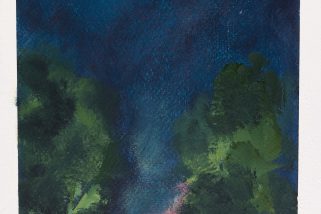The essential “arrangements”—
choose a coffin to keep her
protected from “the elements.” Given sufficient time
we rust like iron, disintegrate in the presence of air
moisture and water. The palpable aging of paper.
Do we all sleep like marble
statues, fixed points in a room
with locked expressions? Interpreting the abstract
space dangling between
waking and sleeping is
an obsessive repetition. Was it Eva Hesse
who explored the medium of art
fading over
time and wasn’t that part of what made it
beautiful? That’s what I still called my mother
post-mastectomy. Her single breast drooping,
a perfect display of three-dimensional
impermanence. A brave faced statue.
That’s how I like to think of it. No—
that thinking makes it bearable
when people ask: how
did it happen? She hanged herself, a lone
wire suspending her, delicately,
like wet paper molded into the exact shape
of emptiness. Unstable. Like a cloth-covered coffin,
left crumpling in the wind,
like paper. Or Eva. Dear Eva,
diagnosed with a brain tumor. Eva who died
in 1970. And mother who wrote a letter before
she died: keep it, safe—
as if the storage of places and names, as if
things and people, couldn’t
rust indistinguishably.
Printed with permission by Tanaya Winder, copyrighted by Tanaya Winder @ 2010.






